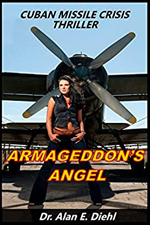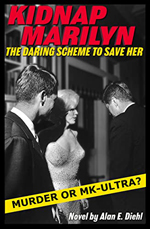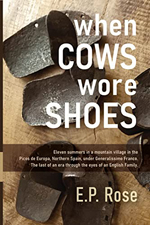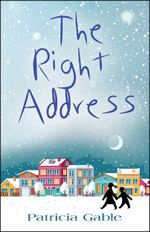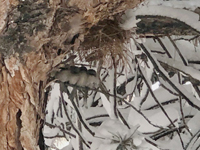Speaker, consultant, and award-winning author Cornelia Gamlem is an expert in employee relations and human resources. Along with her co-author Barbara Mitchell, Cornelia has published six business resource books. Their latest collaboration is The Decisive Manager: Get Results, Build Morale, and Be the Boss Your People Deserve, released by Career Press (March 2023). Visit Cornelia at BigBookofHR.com and MakingPeopleMatter.blogspot.com, as well as on Facebook and LinkedIn. You’ll find all of her books on her Amazon author page. Read more about her writing in her 2019 and 2021 interviews for SouthWest Writers.
 What would you like readers to know about The Decisive Manager?
What would you like readers to know about The Decisive Manager?
Most of the issues an organization has are people issues—issues and situations that must be properly and promptly addressed and managed. Doing so is not an easy endeavor. People issues can be complicated because every person is a unique individual, and there is not necessarily a one-size-fits-all approach that a manager can take. Even the most experienced managers can be surprised by a new situation leaving them feeling vulnerable.
Why did you choose this particular topic to write about and why was this the best time to publish the book?
Managing people is not the responsibility of the HR department, and people management issues constantly challenge front-line managers. We wrote a similar book for managers, The Manager’s Answer Book, in 2018 that included topics across the whole spectrum of management. After publishing the 10-year anniversary edition of The Big Book of HR in 2022, we realized that a book for managers dedicated to people issues would complement both of these books. We wanted a resource for managers to turn to, especially those without an HR department like small business owners, to help with those vexing issues.
During and after the pandemic in 2020, so much about the workplace changed. That was one of our challenges writing The Big Book of HR during 2020 and early 2021. We watched so many new issues arise. The timing was right for addressing these issues. Each section of The Decisive Manager has a subsection for “Navigating the Changing Workplace.”
In a previous interview for SWW you mentioned that you and your co-author (Barbara Mitchell) “divided the work according to our respective areas of expertise then stayed out of each other’s way.” What particular expertise did each of you contribute to The Decisive Manager?
We organized The Decisive Manager around the same sections in The Big Book of HR. We’ve both had years of experience in all functions of human resources, but our individual focuses have been different. Barbara’s expertise and strength is clearly in the area of talent management, “Finding and Hiring the Best Talent.” My expertise and strengths are in the areas of employee relations and compliance, “Understanding Policy and Practices” and “Avoiding Legal Pitfalls,” another subsection. “Creating a Positive Employee Experience” speaks to both of our areas of expertise as well as our passions about creating positive workplace environments for employees and managers alike.
As for the other areas that we address, “Paying and Rewarding Employees,” “Helping Employees Grow and Develop,” and “Ensuring Graceful Endings,” we both brought a great deal of our respective experiences and knowledge.
The sub-title of the book is Get Results, Build Morale, and Be the Boss Your People Deserve. How did you narrow down these managerial goals from what must have been dozens of possibilities?
Our experience continues to show us that organizations—across all sectors of the economy, industries and size—don’t prepare individuals to manage people—the most critical parts of their management responsibilities. This is especially true when they promote people. They take the best technician or widget maker, promote them to be in charge of others and expect them to succeed. Too often these individuals have the best intentions but lack the skills, experience and knowledge to manage people. Their missteps can tear down morale and interfere with productivity. These were the observations that resulted in our focusing on those three management goals.
Did what-if questions help shape this work?
In a sense, yes. Perhaps not so much “what if” but “what do you do when?” or “how do you?” We relied on situations from our collective experiences as a starting place—those evergreen issues that managers struggle with. We also read a great deal about the emerging challenges, many associated with remote and distributed workforces. For example, with so many employees working from make-shift offices during the pandemic, how can employers make sure those arrangements are ergonomically safe.
The biggest challenges we read about and researched were how to keep remote and hybrid workforces motivated and essentially ‘be the boss [all] your people deserve.’ It can be like walking a tightrope for a manager to make sure they are addressing and meeting the needs of all their team members whether they work from home or in the same physical office as the manager.
Any “Oh, wow!” moments while doing research for the book?
Absolutely, especially in the areas of navigating the changing workplace. We had done some work with a company that specializes in using mobile communication methods, such as text messaging, that captures the preferences of younger workers. It was really interesting to learn some of the things that can be done with communication using mobile technology—everything from onboarding employees to learning and development. It really streamlines processes. Another area was microlearning that ties directly with mobile technology. It’s small learning units and short learning activities that can be done from anywhere using mobile devices. It’s very revolutionary.
What writing projects are you working on now?
We’re investigating other areas for getting our messages out. We’ve entered into strategic partnerships with some on-line business platforms and are investigating another with a global reach. I’ve also developed a relationship with Authority Magazine, an on-line business publication through Medium and have had several articles and interviews printed there.
We’re contemplating doing some short e-books that complement our current books. The objective is to both cross-market existing books and get messages out faster. I’m dusting off an old manuscript on the topic of workplace diversity. It’s become a timely topic again and there are now more opportunities and methods for getting that message out into the world.
 KL Wagoner (writing as Cate Macabe) is the author of This New Mountain: a memoir of AJ Jackson, private investigator, repossessor, and grandmother. Kat has a speculative fiction blog at klwagoner.com and writes about memoir at ThisNewMountain.com.
KL Wagoner (writing as Cate Macabe) is the author of This New Mountain: a memoir of AJ Jackson, private investigator, repossessor, and grandmother. Kat has a speculative fiction blog at klwagoner.com and writes about memoir at ThisNewMountain.com.



 Su Lierz writes dark fiction, short story fiction, and personal essays. Her short story “Twelve Days in April,” written under the pen name Laney Payne, appeared in the 2018 SouthWest Writers Sage Anthology. Su was a finalist in the 2017 and 2018 Albuquerque Museum Authors Festival Writing Contest. She lives in Corrales, New Mexico, with her husband Dennis.
Su Lierz writes dark fiction, short story fiction, and personal essays. Her short story “Twelve Days in April,” written under the pen name Laney Payne, appeared in the 2018 SouthWest Writers Sage Anthology. Su was a finalist in the 2017 and 2018 Albuquerque Museum Authors Festival Writing Contest. She lives in Corrales, New Mexico, with her husband Dennis.




